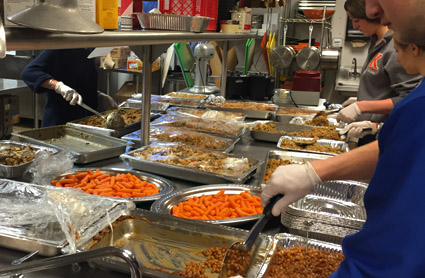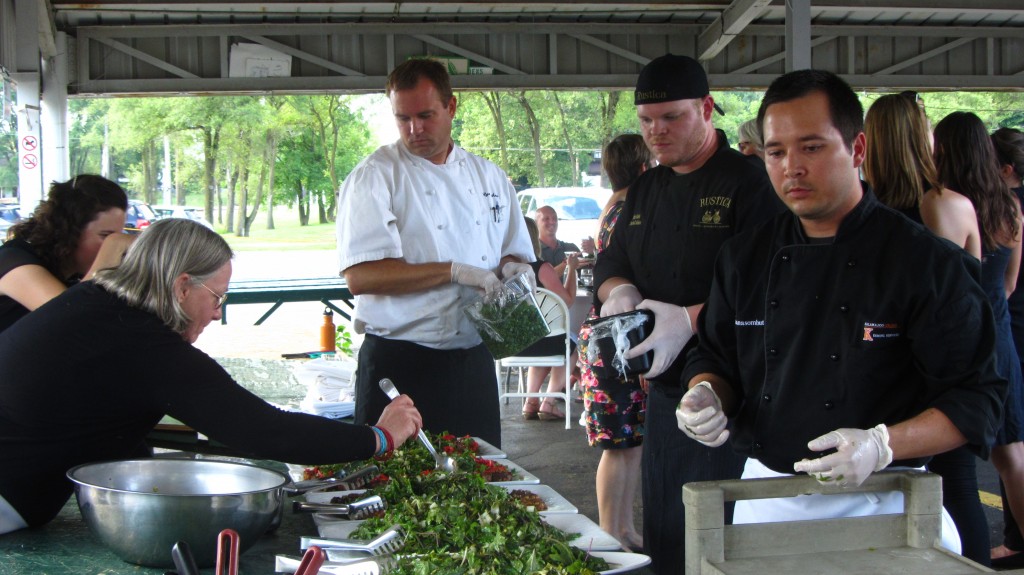A 2015 Kalamazoo College alumna is helping colleges and universities find a variety of ideas for teaching students about environmentalism and climate leadership. As it turns out, her alma mater provides a good model for such ideas.
Bronte Payne has worked as a clean energy associate through Environment America in Boston since graduating from K with a degree in biology. The nonprofit organization works to bring people together to protect clean air, clean water and open spaces.

Climate conversation upcoming
Payne will lead a panel discussion with higher-education representatives, including presidents, sustainability directors and faculty, this Tuesday at the Presidential Climate Leadership Summit in Tempe, Ariz. The climate conversation, she hopes, will encourage administrators to engage students in finding ways to commit their institutions to full renewable-energy use by 2050.
“It’s not so much a presentation as it is a panel to get administrators thinking outside the box,” Payne said. “We want them to see a commitment to renewable energy is an opportunity rather than something that ties their hands. We want to show opportunities for students to get involved.”
Her portion of the panel discussion will focus on how students helped K ensure the environmental “fitness” of its Fitness and Wellness Center, which opened in October after a September dedication. K’s Sustainability Advisory Committee – which included faculty, staff and students – suggested that the College hire two student LEED-equivalent auditors, training them in the design, energy and sustainability criteria that inform LEED (Leadership in Energy and Environmental Design).
LEED-certified buildings use less water and energy, and have less greenhouse gas emissions. Michelle Sugimoto ’17 and Ogden Wright ’16 were chosen from a dozen applicants and met with designers and builders every few weeks during construction. The actual cost of their training and stipends proved to be a small fraction of the cost of LEED certification. Of course the training and the integrity of these two physics and engineering majors ensured their rigorous conscientiousness as LEED-like certifiers. And the overall cost savings allowed the College to buy a 12-kilowatt solar panel array that offsets 5 percent of the new fitness center’s energy costs.
“I would like to show how this was an example of an amazing opportunity for students to get involved in environmental planning and how it might lead to more involvement after school,” Payne said.
Climate conversation at K was inspiring
When Payne first came to K from West Bloomfield, Mich., she planned on attending medical school one day. But plans soon changed.
“I remember talking in class about how the actual city of Kalamazoo was the site of the largest land-oil spill in the U.S.,” she said. “Learning about it was eye opening. The school itself and professors pushed me to think more creatively about what I could do, and how I could engage the community at large. I fell in love with environmental science courses.”
The discovery of her passion for environmentalism led to a Senior Individualized Project involving a Paul Clements congressional campaign, during which she learned about national environmental policy. Now, she can tell others about the exciting things done at K to address sustainability.
“A lot of the work we did at K is how I ended up working in environmentalism,” Payne said. “It’s exciting to talk about the role I have now with Environment America. I also love to tell the story about all the cool work students and administrators did because I love talking about K.”

 Kalamazoo College faculty, staff and students are invited to an Imagine Kalamazoo 2025 Master Plan Meeting on Tuesday, January 31, at 6 p.m. in the Mandelle Hall Olmsted Room. That meeting is one of 12 neighborhood gatherings being organized by the city. Each meeting focuses on a specific neighborhood and provides an opportunity for participants to share input on where they live, work or play. The hands-on activities and small discussion groups that characterize these open-house style meetings allow participants describe the improvements they’d like to see and the priority of projects they consider optimal. Some of the topics for the Kalamazoo College/West Main Hill neighborhood meeting will be: pedestrian and bicycle infrastructure; vehicular management (including on-street parking and traffic calming; M-43/West Main; West Michigan Avenue at M-43/West Main; West Michigan Avenue Lovell Street. Questions on this meeting or the Imagine Kalamazoo process can be sent to
Kalamazoo College faculty, staff and students are invited to an Imagine Kalamazoo 2025 Master Plan Meeting on Tuesday, January 31, at 6 p.m. in the Mandelle Hall Olmsted Room. That meeting is one of 12 neighborhood gatherings being organized by the city. Each meeting focuses on a specific neighborhood and provides an opportunity for participants to share input on where they live, work or play. The hands-on activities and small discussion groups that characterize these open-house style meetings allow participants describe the improvements they’d like to see and the priority of projects they consider optimal. Some of the topics for the Kalamazoo College/West Main Hill neighborhood meeting will be: pedestrian and bicycle infrastructure; vehicular management (including on-street parking and traffic calming; M-43/West Main; West Michigan Avenue at M-43/West Main; West Michigan Avenue Lovell Street. Questions on this meeting or the Imagine Kalamazoo process can be sent to 










